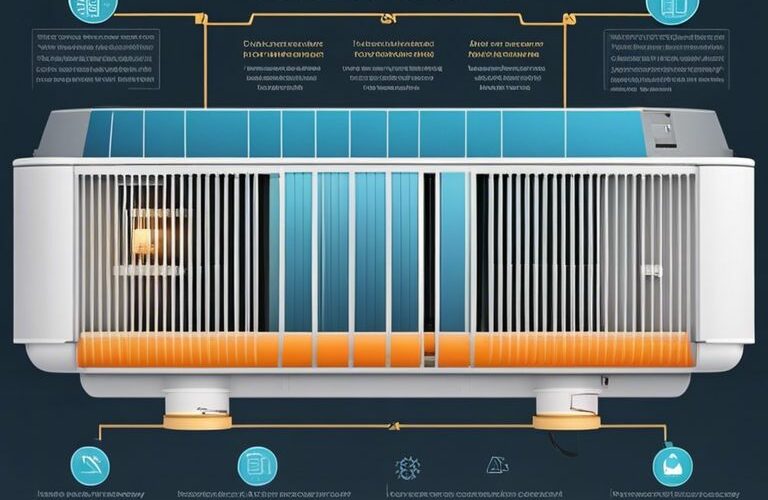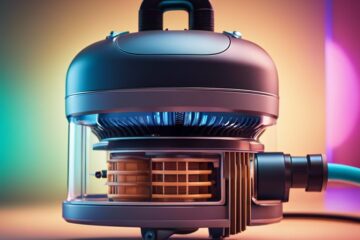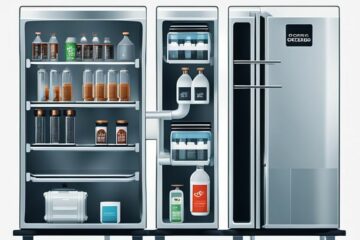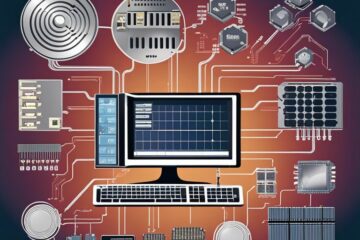Cooling your home efficiently during hot summer days is crucial for staying comfortable. Understanding how an air conditioner works can help you make informed decisions about your cooling system. The basic principle of an air conditioner involves removing heat from the indoor air to lower the temperature inside your home.
By using refrigerant and a system of coils, fans, and compressors, an air conditioner absorbs heat from inside your home and releases it outside. This process cools the air before circulating it back into the indoor space. Regular maintenance and proper installation are key to ensuring efficient operation and longevity of your air conditioner.
Key Takeaways:
- Refrigerant Cycle: Air conditioners work by continuously cycling refrigerant between the indoor and outdoor units.
- Evaporation and Condensation: The refrigerant absorbs heat from indoor air, evaporates, then releases heat outdoors and condenses back into a liquid.
- Compressor: The compressor pressurizes the refrigerant, increasing its temperature and pressure for effective heat transfer.
- Expansion Valve: This component regulates the flow of refrigerant, controlling the temperature and pressure in the system.
- Fan and Coil System: Air is blown over coils filled with refrigerant, transferring heat and cooling the air that is then circulated back into the room.
- Thermostat: The thermostat monitors indoor temperature and triggers the system to turn on or off to maintain a set temperature.
- Filter and Duct System: Air conditioners also have filters to remove dust and debris, and ducts to distribute the cooled air throughout the building.
The Basic Components of an Air Conditioner
It is necessary to understand the basic components of an air conditioner to grasp how this system effectively cools your home. The key components include the compressor, condenser coil, evaporator coil, and expansion valve.
Compressor
For an air conditioner to function, the compressor plays a crucial role in pressurizing the refrigerant gas. The compressor compresses the low-pressure, low-temperature gas into a high-pressure, high-temperature gas before sending it to the condenser coil for further processing.
Condenser Coil
Coil The condenser coil is located in the outdoor unit of the air conditioner and is responsible for releasing heat absorbed from inside the house. As the high-pressure gas flows through the condenser coil, it loses heat and transforms into a high-pressure liquid.
The condenser coil plays a vital role in dissipating heat from the refrigerant, allowing it to cool down and flow back into the home to absorb more heat, thus maintaining a comfortable indoor temperature. It is important to keep the condenser coil clean and free of debris to ensure optimal performance of the air conditioning system.
Evaporator Coil
An important component located in the indoor unit of the air conditioner is the evaporator coil. This coil is responsible for absorbing heat and humidity from the indoor air. As the refrigerant enters the evaporator coil at a low pressure, it absorbs heat and evaporates into a low-pressure gas.
Expansion Valve
Understanding the role of the expansion valve is crucial in the cooling process of an air conditioner. The expansion valve regulates the flow of the refrigerant into the evaporator coil, where it can absorb heat efficiently. By controlling the flow rate of the refrigerant, the expansion valve helps maintain the right balance of pressure and temperature throughout the system.
Ensuring the expansion valve is functioning correctly is integral to the proper operation of the air conditioner. Any issues with the expansion valve can lead to inefficiencies in cooling and potential damage to other components of the system.
The Refrigeration Cycle
Once again, let’s probe the fascinating process of how an air conditioner works through the refrigeration cycle. This cycle involves four main stages: compression, condensation, expansion, and evaporation. Each stage plays a crucial role in cooling down the air in your home.
Stage One: Compression
An air conditioner’s compressor plays a key role in the refrigeration cycle by compressing the refrigerant gas, raising its temperature and pressure. This high-pressure gas then moves to the next stage of the cycle.
Stage Two: Condensation
Compression of the refrigerant gas in the compressor causes it to become a high-pressure, high-temperature gas. As it moves into the condenser coil, the hot gas releases heat to the surrounding air, causing it to condense into a high-pressure liquid.
Plus, the condenser coil helps dissipate the heat from the refrigerant, allowing it to release the absorbed heat from your home to the outdoor environment.
Stage Three: Expansion
Compression of the refrigerant gas in the compressor causes it to become a high-pressure, high-temperature gas. As it moves into the condenser coil, the hot gas releases heat to the surrounding air, causing it to condense into a high-pressure liquid.
Compression of the refrigerant gas in the compressor causes it to become a high-pressure, high-temperature gas. As it moves into the condenser coil, the hot gas releases heat to the surrounding air, causing it to condense into a high-pressure liquid.
Stage Four: Evaporation
On the evaporator coil, the high-pressure liquid refrigerant expands through a valve, causing its pressure and temperature to drop significantly. This low-pressure, low-temperature liquid then absorbs heat from the indoor air, cooling it down before returning to the compressor to start the cycle again.
Understanding the refrigeration cycle is crucial in comprehending how air conditioners work efficiently to keep your living spaces cool and comfortable.
Types of Air Conditioning Systems
All air conditioning systems can be categorized into different types based on their design and functionality. Understanding the various types can help you choose the right system for your space. Here are some common types of air conditioning systems:
Central Air Conditioning
Types of central air conditioning systems include split systems, packaged systems, and ducted systems. Split systems have components located both inside and outside the home, while packaged systems house all components in one unit. Ducted systems use a network of ducts to distribute cooled air throughout the space. After considering your home’s layout and cooling needs, you can decide on the best central air conditioning system for you.
Ductless Mini-Split Systems
MiniSplit ductless systems are becoming increasingly popular due to their energy efficiency and flexibility. These systems consist of an outdoor compressor unit and one or more indoor air-handling units. They are ideal for homes without existing ductwork or for room additions. Central to their operation is the refrigerant line that connects the indoor and outdoor units.
Central to the effectiveness of ductless mini-split systems is the ability to control the temperature in individual rooms or zones, providing personalized comfort and energy savings.
Window Units
Central to the design of window units is their portability and ease of installation. These units are self-contained and are typically placed in a window or a specially designed opening in a wall. They are a cost-effective option for cooling individual rooms or small spaces, making them popular for apartments and small homes.
Plus, window units are relatively easy to maintain and are often equipped with features such as timers and remote controls for added convenience.
Portable Air Conditioners
Conditioning portable units are versatile cooling solutions that can be easily moved from room to room. These units are self-contained, with a built-in exhaust hose to vent hot air outside. They are ideal for spaces where installing a permanent air conditioning system is not feasible, such as rental properties or offices.
Window units are popular for their portability and quick installation, providing on-the-go cooling options for various living spaces.
Hybrid Air Conditioners
Types of hybrid air conditioners combine the functionality of traditional air conditioners with alternative energy sources, such as solar power or geothermal energy. These systems offer energy savings and environmental benefits by reducing reliance on electricity from the grid.
A hybrid air conditioner can help reduce your carbon footprint and lower your energy bills in the long run, making it a sustainable choice for environmentally conscious consumers.
Geothermal Heating and Cooling
Hybrid geothermal systems utilize the stable underground temperature to provide efficient heating and cooling for homes. These systems use a series of pipes buried underground to transfer heat, offering stable and sustainable temperature control throughout the year.
Conditioners geothermal systems are environmentally friendly and can significantly reduce energy costs over time, making them a long-term investment in sustainable living.
Thermostat and Control Systems
Working of Thermostats
Many air conditioners are equipped with a thermostat that plays a crucial role in regulating the temperature of a room. Thermostats work by sensing the temperature in the room and sending signals to the air conditioner to either start or stop the cooling process. When the temperature rises above the set level, the thermostat triggers the air conditioner to kick in and lower the temperature back to the desired level.
Modern Thermostat Technologies
For modern air conditioning systems, thermostat technologies have advanced significantly. Smart thermostats are now available, which can be controlled remotely through smartphone applications. These thermostats can also learn the user’s preferences and adjust the temperature settings accordingly, leading to increased energy efficiency.
Systems
Modern thermostat technologies not only offer convenience but also help in saving energy and reducing utility costs. With features like programmable schedules, motion sensors, and energy usage reports, these smart thermostats provide users with greater control over their indoor climate while promoting eco-friendly practices.
Maintaining Your Air Conditioner
Now, let’s discuss how you can ensure your air conditioner runs efficiently for years to come through proper maintenance.
Routine Maintenance Tasks
Tasks like regularly cleaning or replacing the air filters, checking and cleaning the evaporator and condenser coils, clearing debris from the outdoor unit, and ensuring proper airflow are crucial to the efficiency of your air conditioner. These routine maintenance tasks not only help in improving the air quality but also prevent major issues down the line. Setting up a schedule to conduct these tasks can go a long way in extending the lifespan of your unit.
Troubleshooting Common Issues
Maintaining your air conditioner also involves being proactive in identifying and addressing common issues. It is vital to look out for signs such as inadequate cooling, strange noises, or leaks around the unit. These could indicate problems like refrigerant leaks, faulty components, or clogged drains. It is recommended to address these common issues promptly to prevent further damage to your system.
It is crucial to address any issues as soon as they arise to avoid a complete breakdown of your air conditioner. Regularly monitoring and addressing minor issues can save you from costly repairs in the future.
When to Call a Professional
Troubleshooting issues beyond routine maintenance tasks might require the expertise of a professional. If you notice your air conditioner not cooling properly, constantly cycling on and off, or emitting strange odors, it is time to call in a certified technician. These professionals have the knowledge and tools to diagnose and fix complex issues to ensure your air conditioner functions optimally.
Understanding when to seek professional help is vital in maintaining the efficiency and longevity of your air conditioner. Delaying repairs can lead to more significant problems, so it is best to address issues promptly.
Energy Efficiency Tips
Efficiency in operating your air conditioner not only saves you money but also reduces your carbon footprint. To maximize energy efficiency, consider installing a programmable thermostat, sealing duct leaks, using ceiling fans, and scheduling regular maintenance.
- Regular tune-ups
- Proper insulation
- Optimal thermostat settings
Following these energy efficiency tips can help you stay cool while saving on energy costs. Recall, though, always consult a professional for any major upgrades or modifications.
Routine Maintenance
Routine maintenance is key to the longevity and performance of your air conditioner. Checking and replacing filters, clearing debris, and inspecting the unit regularly are simple yet vital tasks that can make a significant difference in the efficiency of your system. Consistent maintenance will not only save you money in the long run but also ensure a comfortable indoor environment.
Environmental Impact and Innovations
After being a game-changer in keeping our indoor spaces cool during scorching summers, air conditioners have also raised concerns about their impact on the environment. One of the main environmental issues associated with air conditioning is the depletion of the ozone layer caused by the release of refrigerants. These refrigerants, such as chlorofluorocarbons (CFCs) and hydrochlorofluorocarbons (HCFCs), have been found to contribute to the breakdown of the ozone layer, leading to harmful ultraviolet (UV) radiation reaching the Earth’s surface.
The Ozone Layer and Refrigerants
For this reason, there has been a global effort to phase out ozone-depleting refrigerants and replace them with more environmentally friendly alternatives. The Montreal Protocol, an international treaty aimed at protecting the ozone layer, has played a crucial role in regulating the use of harmful refrigerants and promoting the adoption of safer options, such as hydrofluorocarbons (HFCs) and hydrocarbons.
Advances in Eco-Friendly Cooling
One exciting development in the field of eco-friendly cooling is the rise of sustainable refrigerants that have a lower impact on the environment. These new refrigerants not only help reduce the depletion of the ozone layer but also have a lower global warming potential (GWP), mitigating their contribution to climate change. Additionally, innovations in energy-efficient air conditioner designs and technologies are helping to lower energy consumption and decrease carbon emissions.
Environmental concerns have driven manufacturers and researchers to explore alternative cooling technologies that are both effective and environmentally responsible. One such advancement is the development of air conditioners that utilize natural refrigerants like carbon dioxide (CO2) or ammonia, which have minimal impact on the ozone layer and offer high energy efficiency rates.
The Future of Air Conditioning Technology
Advances in air conditioning technology continue to focus on enhancing energy efficiency and reducing environmental impact. Innovations such as variable refrigerant flow (VRF) systems and smart thermostat controls are revolutionizing how air conditioners operate, allowing for more precise temperature control and lower energy consumption. Additionally, the integration of renewable energy sources, such as solar power, into air conditioning systems is paving the way for a more sustainable future.
This ongoing push for eco-friendly cooling solutions is imperative in addressing the environmental challenges posed by traditional air conditioning systems. By prioritizing sustainability and innovation, the air conditioning industry can play a vital role in combating climate change and protecting the planet for future generations.
Final Words
The process of how an air conditioner works is quite fascinating. By using the principles of thermodynamics, refrigerant, coils, and fans, an air conditioner is able to effectively remove heat from inside a space and expel it outside. This cycle of cooling and dehumidifying the air allows for a comfortable indoor environment regardless of the external temperature.
The proper understanding of how an air conditioner works can help individuals maintain and troubleshoot their units effectively. By ensuring that the components are working efficiently and the system is well-maintained, one can enjoy the benefits of a well-functioning air conditioner for years to come.
FAQ
Q: What is the basic principle of how an air conditioner works?
A: Air conditioners work on the principle of removing heat from the air inside a room and transferring it outside, leaving the inside air cool and comfortable.
Q: What are the main components of an air conditioning system?
A: The main components of an air conditioning system include a compressor, a condenser, an expansion valve, and an evaporator.
Q: How does the compressor work in an air conditioner?
A: The compressor pressurizes the refrigerant gas, which increases its temperature. This high-pressure, high-temperature gas then flows to the condenser coil to release heat.
Q: What is the function of the condenser in an air conditioning system?
A: The condenser is responsible for releasing the heat absorbed from the indoor air to the outside environment, allowing the refrigerant to cool and turn into a high-pressure liquid.
Q: What role does the expansion valve play in the air conditioning process?
A: The expansion valve regulates the flow of the high-pressure liquid refrigerant coming from the condenser, allowing it to expand and cool rapidly as it enters the evaporator coil.
Q: How does the evaporator coil contribute to cooling the indoor air?
A: The evaporator coil absorbs the heat from the indoor air as the liquid refrigerant inside it evaporates into a gas. This process cools the air before it is circulated back into the room.
Q: What is the function of the fan in an air conditioner?
A: The fan in an air conditioner helps circulate the cool air produced by the system throughout the room, ensuring even distribution and efficient cooling.





